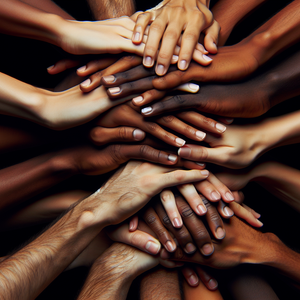Snapchat and Mental Health: The Double-Edged Sword

One of the most notable aspects of Snapchat is its ability to create and maintain connections. In a world where physical distances can strain relationships, Snapchat allows users to stay in touch with friends and family through quick snaps, stories, and private messages. This immediacy can provide a sense of belonging and emotional support, which is crucial for mental well-being. For instance, during the COVID-19 pandemic, many users turned to Snapchat to maintain social interactions, share experiences, and offer support to one another, highlighting the platform's role as a vital communication tool during times of isolation.
Encouraging Authenticity
The platform's ephemeral nature encourages authenticity and spontaneity in communication. Unlike traditional social media networks, Snapchat's disappearing messages can reduce the pressure to curate a perfect online persona. This feature allows users to share candid moments without the fear of permanent digital footprints, fostering a more genuine form of self-expression that can alleviate social anxiety. In a study conducted by the University of California, researchers found that individuals who engage in more spontaneous and authentic self-presentation on social media report higher levels of life satisfaction and lower levels of anxiety.
Mental Health Awareness Initiatives
Snapchat has implemented features aimed at mental health awareness, such as the 'Here For You' tool, which provides users with resources and support related to mental health issues. This initiative includes access to information on anxiety, depression, and suicide prevention, as well as connections to crisis intervention services. By offering such resources, Snapchat plays a proactive role in promoting mental wellness, empowering users to seek help when needed.
Negative Effects of Snapchat on Mental Health
Despite its benefits, Snapchat also presents several challenges that can adversely affect mental health. The platform's heavy emphasis on visual aesthetics can lead to unhealthy comparison among users. With the prevalence of filters and curated content, individuals may feel pressured to present an idealized version of themselves. This constant comparison can exacerbate feelings of inadequacy, anxiety, and low self-esteem, particularly among teenagers and young adults. A study published in the journal 'Cyberpsychology, Behavior, and Social Networking' found that individuals who frequently engage in social comparison on visual platforms like Snapchat report higher levels of body dissatisfaction and depressive symptoms.
Digital Fatigue and Addictive Behavior
Furthermore, the addictive nature of Snapchat can contribute to digital fatigue. The platform's design encourages frequent checking and engagement, which can lead to excessive screen time. Research indicates that prolonged use of social media can negatively impact mental health, resulting in increased feelings of loneliness and depression. Users may find themselves trapped in a cycle of seeking validation through likes and views, leading to a detrimental focus on external approval rather than internal well-being. According to a study by the American Psychological Association, excessive social media use is correlated with higher levels of anxiety and lower overall life satisfaction.
Striking a Balance
To navigate the complexities of Snapchat's impact on mental health, users must strive for a balanced approach. Mindfulness in usage can help individuals recognize when their engagement with the platform becomes detrimental. Setting boundaries, such as designated 'phone-free' times or limiting daily usage, can mitigate the risks associated with excessive social media engagement. For example, the 'Screen Time' feature available on many smartphones allows users to track and limit their social media usage, promoting healthier habits. Additionally, fostering a positive online environment is crucial. Encouraging authentic interactions, supporting peers, and promoting mental health resources can transform Snapchat into a tool for empowerment rather than a source of anxiety. Users should be aware of the content they consume and share, opting for positivity and support over negativity and comparison. Creating 'snap groups' focused on shared interests or goals can also foster a sense of community and support among users.
Snapchat's influence on mental health is a multifaceted issue that reflects the broader challenges and opportunities presented by social media. While the platform can foster connection and authenticity, it also poses risks related to comparison and digital fatigue. By understanding these dynamics and adopting mindful practices, users can harness Snapchat's potential for positive engagement while safeguarding their mental well-being. As we continue to navigate the digital landscape, it is essential to prioritize mental health and seek balance in our online interactions, ensuring that platforms like Snapchat serve as a source of support rather than stress. As we leverage the benefits of Snapchat, we must also remain vigilant about its potential drawbacks, fostering a healthier relationship with our digital lives.
Social Media Mental Health Coordinator
non-profit organizations, universities, mental health advocacy groups
Job Responsibilities
Develop and implement mental health awareness campaigns on social media platforms.
Collaborate with mental health professionals to create engaging content that promotes mental wellness.
Analyze user engagement and feedback to assess the effectiveness of campaigns and make necessary adjustments.
User Experience (UX) Researcher in Digital Health
Job Responsibilities
Conduct user research to understand how individuals interact with mental health apps and social media platforms.
Design and execute studies to assess the impact of design features on user well-being and engagement.
Collaborate with product teams to implement user-centered design changes based on research findings.
Preferred Qualifications
Background in psychology, human-computer interaction, or a related field.
Digital Content Strategist for Mental Health Initiatives
health tech startups, NGOs, educational institutions
Job Responsibilities
Create and oversee the production of content aimed at promoting mental health awareness on digital platforms.
Develop strategic plans for content distribution that enhance user engagement and reach target audiences effectively.
Collaborate with mental health experts to ensure accurate and sensitive messaging.
Behavioral Data Analyst in Social Media
Job Responsibilities
Analyze user behavior data to identify trends related to mental health and social media usage.
Provide insights to guide product development and marketing strategies that prioritize user well-being.
Utilize statistical tools and software to interpret complex data sets and present findings to stakeholders.
Requirements
Proficiency in data analysis tools (e.g., SQL, R, Python) and a strong understanding of behavioral psychology.
Community Manager for Mental Health Platforms
mental health apps, support groups, wellness organizations
Job Responsibilities
Create and manage online communities focused on mental health support, fostering engagement and providing resources.
Monitor discussions to ensure a safe and supportive environment, intervening when necessary.
Develop initiatives that encourage participation and build a sense of community among users.
Skills
Skills in conflict resolution and empathy are essential.


